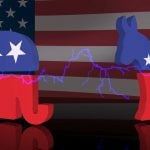As my son, Daniel says all of the time, “Our problem is not a lack of resources. Our problem is a constipation of imagination.”
In our culture today, we’re all blocked up. Because we’re so sure we know how it’s supposed to be done. That becomes our limiting factor. We can do things very differently and profoundly better, but it never even enters the imagination.
So says the always colorful “renegade farmer” Joel Salatin, who returns to the podcast this week to share his latest thoughts on creative yet practical solutions society could and should be pursuing vs limiting and litigating everything under the sun.
Much of what’s needed is a shift in thinking and priorities, says Salatin. And it starts with embracing initiative, accountability, and a ‘do more with what we have’ mentality — which stands in stark contrast to the “we just need more stuff” narrative of today’s status quo:
It’s easy to say, “I can’t.” It’s a lot harder to say, “I can.”
“I can’t” is so fun to say. Because then we’re not responsible. If you can do something, but you’re not; then you’re responsible. But, if you can’t do it, and you’re not; then you’re of the hook. “I can’t” – is a real enabler for business as usual.
Using farming as a metaphor, we see it in our industry all the time. When a farm wants to produce more — say, in order to generate more salaries — most farmers always thinking; “How do we gobble up additional farmland and additional acres?” I
At my place, Polyface Farms, we instead think, “How can we stack?” This is a permaculture concept. How can we stack more enterprises on the acreage we have?
For example, we’ve dug a bunch of ponds; enough now that we’ve bought some of this K-Line Irrigation system. Now, when it gets dry in the summer; instead of sitting here and being depressed on the stoop because it’s not raining, we take winter snow melt and early spring rains like we have had just lately — all of our ponds are full now — and in August, we can dispense that water out on the landscape. We can grow another whole cycle of vegetation. Whether it’s crops, grass — whatever — we can grow another cycle of vegetation with that stored water. That’s a way to work from the inside out, instead of looking for additional production from outside. Let’s look inside. Let’s see what we can do with what we already have. We can grow other products. We can do other things.
I mean, we have a sawmill. We got a sawmill so we could cut our own lumber. But guess what? We can make furniture out of that lumber. Suddenly, those trees that are worth $10 wholesale at the sawmill suddenly become worth $500 in a hutch, or a chair, or a table, or whatever. Suddenly, instead of having to harvest 50 acres of forest in order to make a decent income; we only have to harvest half an acre. All of the rest can keep growing. We make the same amount out of half an acre that we did off of 50 acres.
That’s the kind of inside out thinking .And through this stacking of synergistic enterprises, we actually generate more income on the same acreage as opposed to always looking at more acreage.
Click the play button below to listen to Chris’ interview with Joel Salatin (63m:22s).











